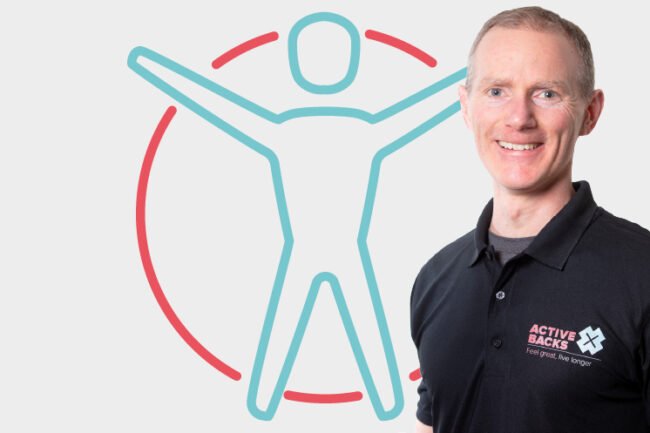How to get relief from low back pain
How to get relief from low back pain
This episode is entitled “How to get relief from low back pain” and the tips covered are:
- Don’t do things that cause you low back pain
- Move often to get relief from low back pain
- Sleep well
- Don’t worry
- Use painkillers to get relief from low back pain
- Use manual therapy for relief from low back pain
- Start low and build slow

Don’t do things that cause you low back pain
If you want to get relief from low back pain, stop doing things that cause you pain. The biological purpose of pain is an alarm system. It’s there to tell you that there’s a problem. If you keep doing things that cause you pain, you’ll further alarm your alarm system. It will ring louder and you may actually delay or prevent healing entirely.
Move often to get relief from low back pain
Your body, brain and nervous system are completely integrated when you have persistent pain. Your subconscious nervous system becomes very alarmed. One of the most reassuring things for it is moving. If it hurts to bend forwards, but you can bend to the side, then do that. It’s very important in every stage of healing to move all body parts, as that stimulates your circulatory system. Circulation is essential for healing. It brings oxygen and glucose, rebuilding blocks to that tissue and help it to heal and regenerate. Moving often in ways that don’t hurt is very important to getting relief from low back pain. It will settle your neurosystem, calm you down and reduce your experience of pain.
Sleep well
Turning off digital devices, reading a good book, having a warm drink, having a dark room. All of these things are essential. The quality and length of your sleep has an enormous impact on how much pain you experience. People who are sleep deprived are more inclined to feel pain. Sleep deprivation is really nasty when it comes to chronic pain, because it will tend to lead to more and more pain, the less sleep you have. This is a cycle that’s very important to get out of. Taking pain relieving medication or some other approach may help you to sleep better.
Don’t worry
Stressing about your pain or anything else in life will lead to more pain. The maintenance of pain is less related to the amount of damage you’ve incurred and more related to the amount of threat that you experience. If you think your back is terrible and never going to get better, it’s a very high level of worry. That will increase the amount of pain you experience. The amount of injury, the extent of damage is not correlated to the amount of pain. You can have lots of pain and very little damage, modest pain and lots of damage.
So don’t worry. The more you do, the worse your pain will be, and the more you’ll tend to overprotect yourself. That is likely to lead to a bad outcome when it comes to your low back pain. Worrying leads to more pain in the short term and will also tend to result in you avoiding doing things.
Use painkillers to get relief from low back pain
Painkillers, medications, CBD oil, or ice parking. Whatever technique you use for pain relief, try to only use it when you’re trying to get to sleep. If you use pain relief to do more of the things that would otherwise be painful to do, you may prevent healing. When you stop taking that pain relief, the pain is still going to be there. Use the pain, learn from it when you’re awake, the things that you should and shouldn’t do in the short-term and gradually build back up.
Use manual therapy for relief from low back pain
Manual therapy, whether it’s a massage, osteopathy, chiropractic, manipulative, physiotherapy, is helpful in getting relief from low back pain. Use manual therapy on that basis, but don’t think it’s going to solve all your problems. Manual therapy is effective at relieving pain and helping you get back up onto the clifftop, rather than the preventative step of getting back from the edge.
Start low and build slow
If you’re trying to get relief from low back pain, start low and build slow. If you can walk a hundred yards without increasing your pain, do it. But if it gets sore at a hundred yards, stop and stick at that for a day or two, and then try 110 yards. Maybe by the end of the week, you’ll be up to two or 300 yards. Start at the level that you can start low and build slow. It’s very common, as soon as you start to feel a bit better, to think you can do this and that, but then you have an acute flare up of pain again.


